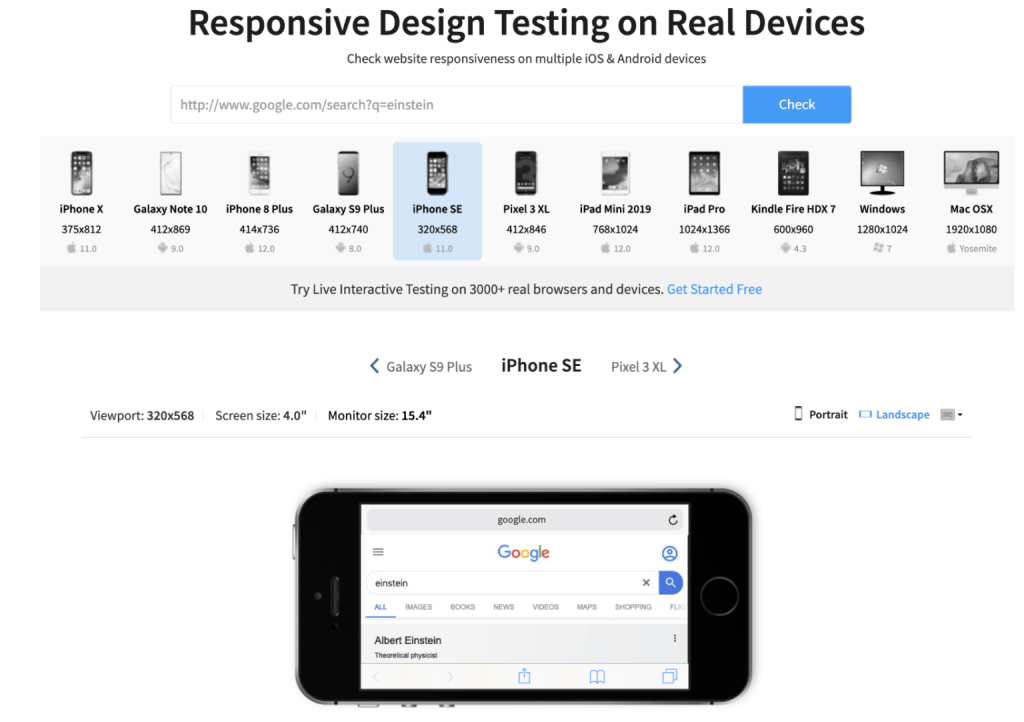
In today’s digital age, having a responsive website is no longer just a trend; it’s a necessity. With the increasing use of smartphones and tablets, users expect websites to adapt seamlessly to their device’s screen size and resolution. A responsive website not only enhances user experience but also plays a crucial role in search engine optimization (SEO). In this article, we’ll discuss eight practical ways to make your website responsive while incorporating an effective SEO strategy for 2024.
1. Understanding Responsive Design
Before delving into practical tips, it’s essential to grasp the concept of responsive design. Create Responsive design is a web development approach that ensures a website’s layout, content, and functionality adapt fluidly across various devices and screen sizes. It employs flexible grids, images, and CSS media queries to achieve seamless responsiveness.
2. Mobile-First Approach
In 2024, mobile optimization is paramount. With Google’s mobile-first indexing, the search engine primarily uses the mobile version of a website’s content for ranking and indexing. Therefore, adopt a mobile-first approach when designing and optimizing your website. Prioritize mobile user experience and ensure that your website functions flawlessly on smaller screens.
3. Utilize Responsive Frameworks
Responsive frameworks like Bootstrap, Foundation, and MaterializeCSS provide pre-built templates and components that facilitate responsive web design. These frameworks offer grids, typography, and UI elements optimized for responsiveness, making the development process faster and more efficient. Utilize these frameworks to streamline your responsive design efforts.
4. Flexible Images and Media
Ensure that images and media elements on your website are flexible and scalable. Use CSS techniques such as max-width: 100% to prevent images from exceeding their container’s width and causing horizontal scrolling on smaller screens. Optimize images for web by compressing file sizes without compromising quality to improve loading times, especially on mobile devices with slower internet connections.
5. Responsive Typography
Typography plays a significant role in readability and user experience. Implement responsive typography techniques such as viewport units (vw, vh) and fluid typography to ensure that text adjusts proportionally to the screen size. Choose legible fonts and maintain adequate line spacing to enhance readability across devices.
6. Fluid Layouts with CSS Grid and Flexbox
CSS Grid and Flexbox are powerful layout tools that enable the creation of fluid and responsive designs. Use CSS Grid for two-dimensional layouts and Flexbox for one-dimensional layouts to build flexible grid systems that adapt seamlessly to different screen sizes. Experiment with these layout techniques to achieve optimal responsiveness and visual harmony.
7. Test Across Multiple Devices
Testing is crucial to ensure that your website performs well across various devices and browsers. Use tools like Google’s Mobile-Friendly Test, BrowserStack, and Responsinator to evaluate your website’s responsiveness on different devices, including smartphones, tablets, laptops, and desktops. Identify and address any issues related to layout, functionality, or performance to deliver a consistent user experience.
8. Continuous Optimization and Monitoring
Responsive web design is not a one-time task but an ongoing process. Continuously monitor your website’s performance and user feedback to identify areas for improvement. Utilize web analytics tools like Google Analytics and Google Search Console to track user behavior, traffic sources, and mobile usability issues. Regularly update and optimize your website’s content, design, and functionality to stay ahead in the ever-evolving digital landscape.
SEO Strategy for 2024:
In 2024, search engine optimization continues to evolve, emphasizing user experience, relevancy, and authority. Here’s a detailed SEO Tutorial for Beginners for the current landscape:
1. User Experience Optimization: Prioritize user experience across all devices, focusing on page speed, mobile-friendliness, and intuitive navigation. Optimize website performance, minimize loading times, and ensure seamless navigation to enhance user satisfaction and reduce bounce rates.
2. Content Relevance and Quality: Create high-quality, relevant content that addresses users’ search intent and provides valuable information. Conduct keyword research to identify relevant topics and incorporate targeted keywords naturally into your content. Leverage structured data markup to enhance content visibility and improve click-through rates in search results.
3. Voice Search Optimization: With the rise of voice search technology, optimize your content for voice queries by using natural language and conversational phrases. Target long-tail keywords and answer-based queries to align with voice search behavior and enhance your chances of appearing in featured snippets.
4. Local SEO: For businesses targeting local audiences, optimize your online presence for local search by claiming and optimizing Google My Business listings, creating localized content, and obtaining citations from reputable directories. Encourage positive reviews and engage with local communities to build trust and credibility.
5. E-E-A-T (Experience, Expertise, Authoritativeness, Trustworthiness): Focus on establishing experience, expertise, authoritativeness, and trustworthiness across your website and content. Showcase credentials, certifications, and testimonials to demonstrate expertise in your industry. Build authoritative backlinks from reputable sources and adhere to ethical SEO practices to earn trust from both users and search engines.
6. AI and Machine Learning Integration: Embrace AI and machine learning technologies to enhance SEO strategies, such as natural language processing for content optimization, predictive analytics for keyword targeting, and personalized search experiences. Stay updated on emerging technologies and trends to adapt and innovate in the rapidly evolving SEO landscape.
7. Video and Visual Content Optimization: Leverage the power of video and visual content to engage users and enhance search visibility. Optimize video content for search engines by using descriptive titles, tags, and transcripts. Incorporate visual elements such as infographics, images, and interactive media to enrich your content and attract organic traffic.
8. Social Media Integration: Integrate social media marketing with your SEO efforts to amplify brand visibility, drive traffic, and foster community engagement. Share content across social platforms, encourage social sharing and participation, and monitor social signals to gauge content performance and user engagement.
By implementing these practical tips and adopting an affordable seo services tailored to the current landscape, you can create a responsive website that not only delights users but also ranks well in search engine results. Stay proactive, stay adaptive, and prioritize the needs of your audience to thrive in the competitive digital ecosystem of 2024 and beyond.
